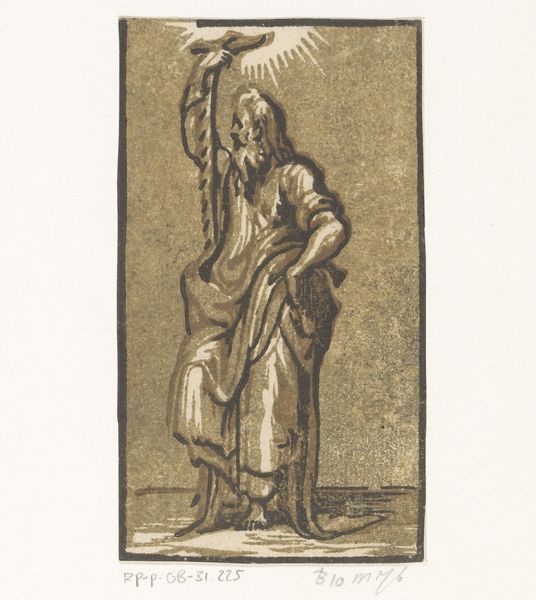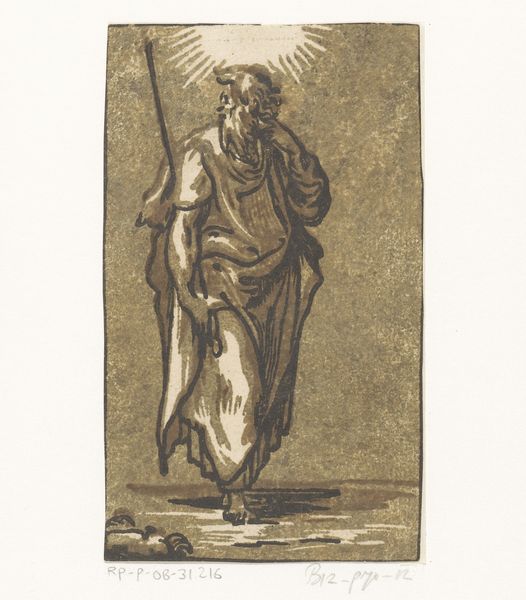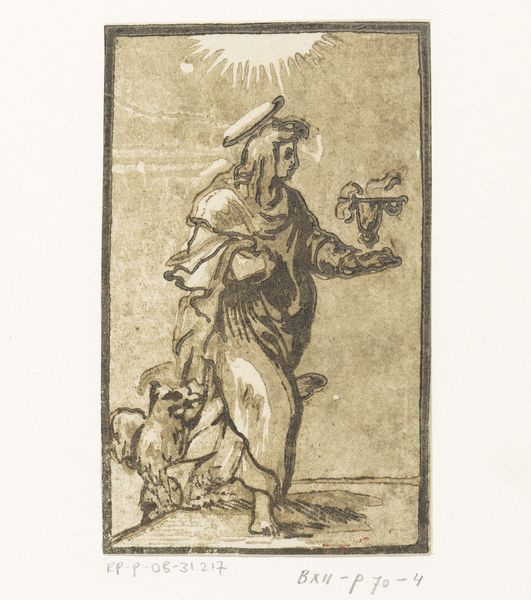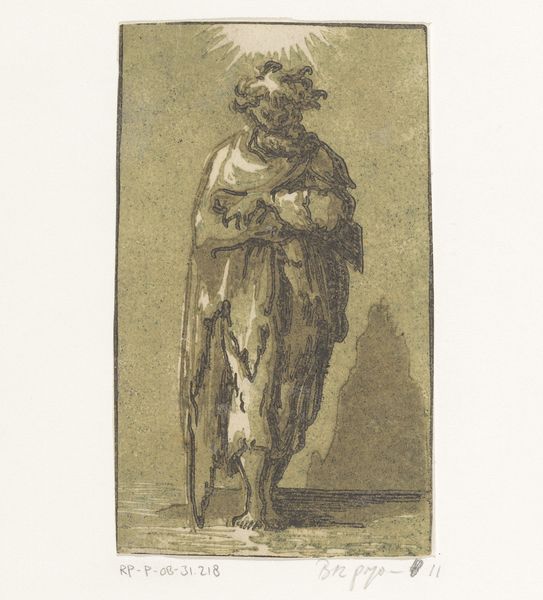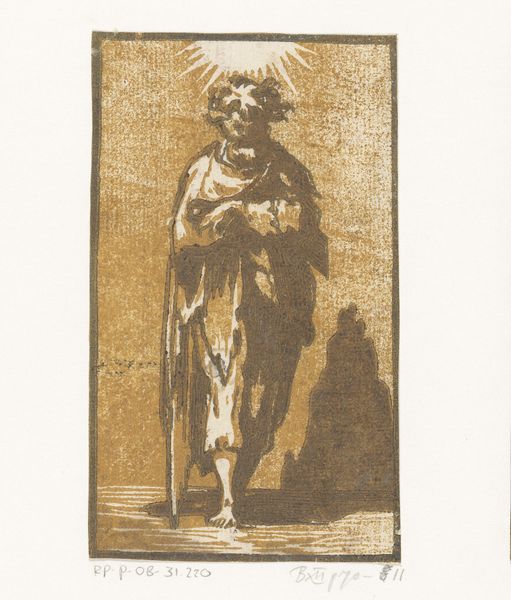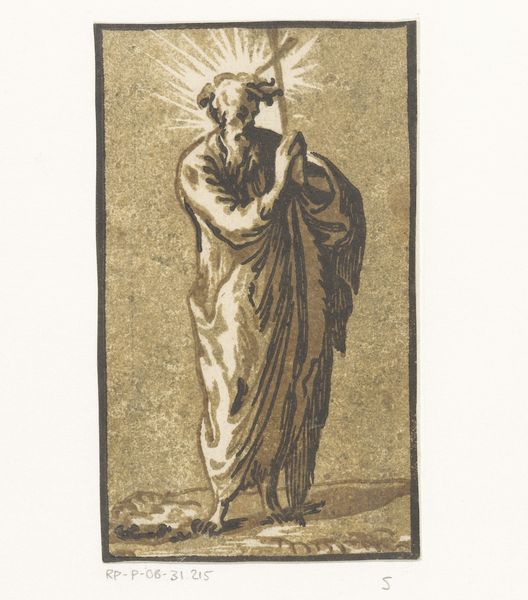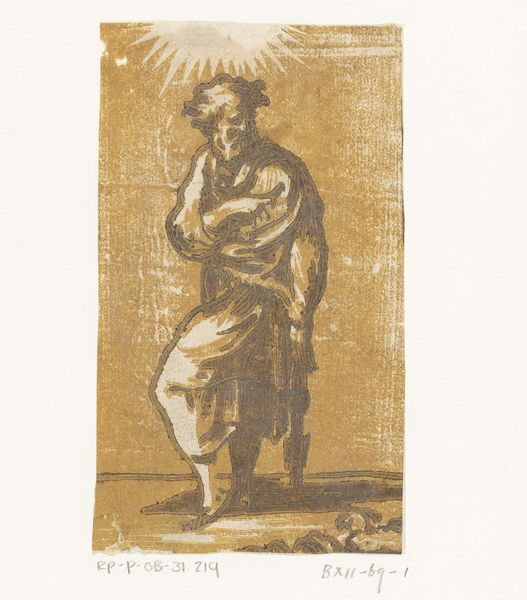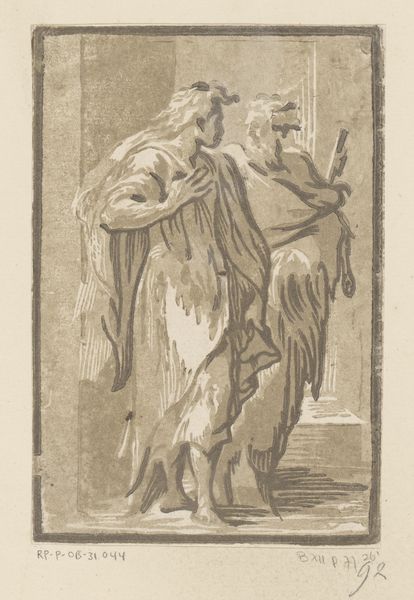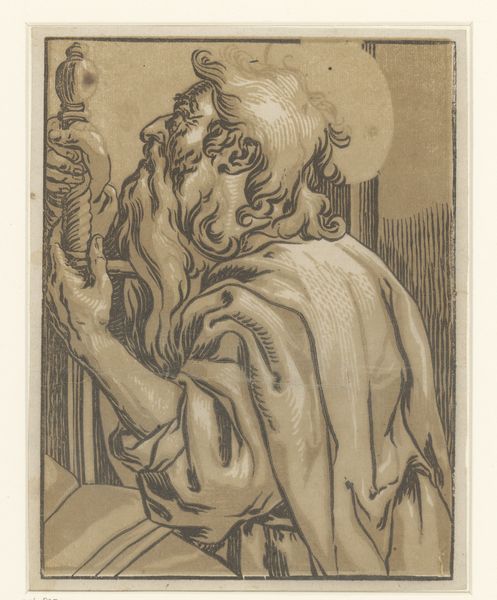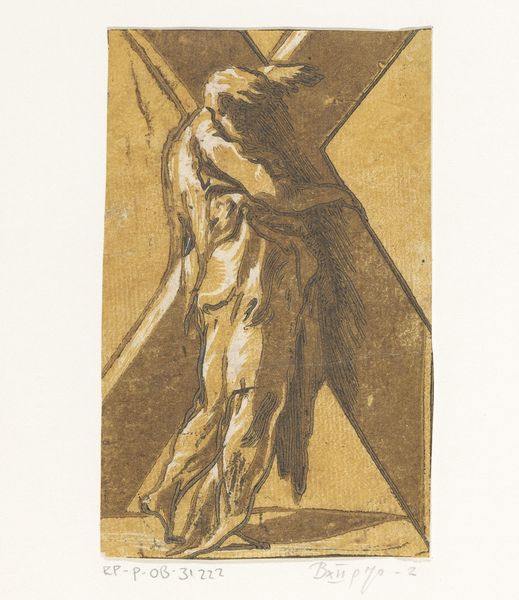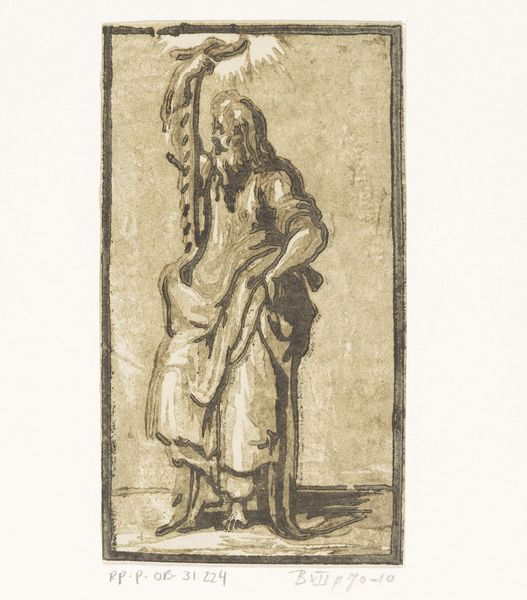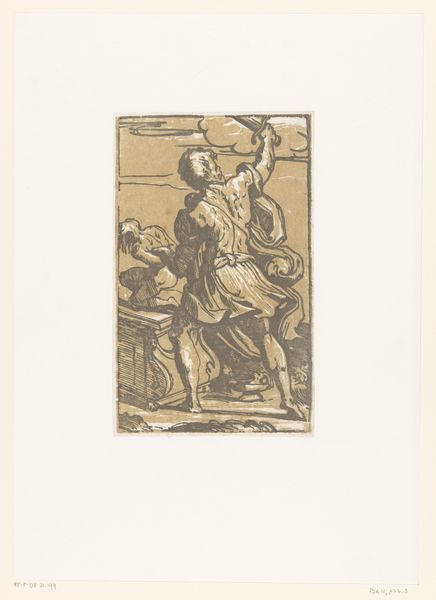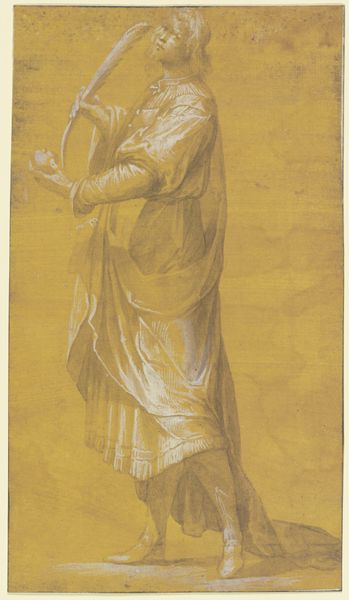
print, woodcut
#
portrait
#
medieval
# print
#
figuration
#
woodcut
Dimensions: height 128 mm, width 75 mm
Copyright: Rijks Museum: Open Domain
Editor: Here we have "Heilige Matteüs", or "Saint Matthew", a woodcut print by Antonio da Trento, dating from around 1520 to 1550. It feels both powerful and somewhat austere. What do you see in this piece that might tell us about its time? Curator: Well, let's consider what this print signifies within its historical context. This depiction of Saint Matthew, circulated via a relatively accessible medium like woodcut, served a very specific purpose. The image acts as a didactic tool, shaping the public's understanding of religious figures. Editor: So, less about pure artistic expression and more about conveying religious narratives? Curator: Precisely! The print media allowed for the widespread distribution of these images, thus controlling the narratives available to the populace. The halo, the spear… these aren’t just aesthetic choices. They are calculated visual cues reinforcing the saint's authority. Note how Matthew isn’t depicted as an individual but as an archetype. Editor: It makes me think about how images shape public perception, even today. How did the art world impact politics then? Curator: This piece also illustrates the close relationship between art and religious institutions. The demand for such images created a market, empowering artists like Antonio da Trento, yet simultaneously subjecting them to the Church's ideological constraints. This blend of creativity and conformity reveals the fascinating paradox of artistic production within that socio-political climate. Editor: That gives me a new perspective on how even seemingly simple art like a woodcut print can tell such a complex story. Curator: Exactly, it is a window into the complex dynamics of art, religion, and society.
Comments
No comments
Be the first to comment and join the conversation on the ultimate creative platform.
